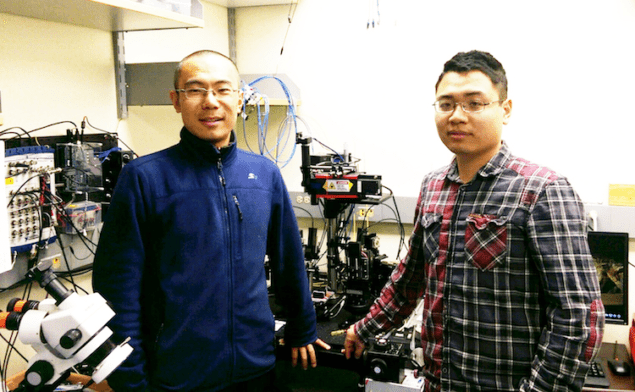
Light-induced processes at the interface between silicon-based structures and biological ones can be used to remotely control a wide range of biological activities – from single cell calcium signalling to brain activity – without any genetic engineering of the biological systems involved. The new finding could help in the development of “electroceuticals”, in which bioelectric signals could be modulated to treat disease. As well as biomedical applications, the toolkits employed could also be used to study fundamental biophysical processes.
Silicon-based materials are widely used in biological applications. Two examples include silicon nanowire-based transistors for electrically monitoring the signals in cardiomyocytes and bioelectronics implants for the heart. They are rarely found in remotely controlled and interconnect-free device set ups, however. This is because researchers do not fully understand the complex physicochemical processes at play at the interfaces between silicon and biological materials.
Remotely-controlled biointerfaces
A team of researchers led by Bozhi Tian of the University of Chicago in the US is now putting forward a biology-guided design principle to make silicon-based structures for remotely-controlled biointerfaces. “We all know that biological structures are hierarchical in nature and span multiple length scales, from nanometre-sized organelles and micron-level single cells to centimetre-scale organs,” says Tian. “To form intimate interfaces with various biological targets, silicon materials therefore need to have right geometries and mechanical properties to match those of biological systems. In our work, we created three types of materials: silicon nanowires that slide along cytoskeletal filaments; thin silicon membranes that adhere well to cultured cells or tissue slices; and gold-coated flexible silicon meshes that closely ‘wrap around’ the brain cortex.”
The researchers also studied the effect of other parameters, such as size, chemical doping and surface chemistry, on the properties of the silicon structures.
Photothermal effect
Glial cells, for example can selectively internalize the nanocrystalline silicon nanowires. “When we then illuminate these wires with light, they heat up and this heat produces surges of calcium ions inside the cells,” explains study lead author Yuanwen Jiang. Calcium ions are ubiquitous signalling molecules in all multicellular organisms and are involved in many aspects of intracellular and extracellular communication. In the brain, for instance, variations in intracellular calcium concentrations in either neurons or glial cells are linked to synaptic activity.
“As for the silicon membranes, we added diode junctions to them and placed them in close contact with neuronal cultures and brain slices (from mice),” says Jiang. “Again, they react to light and produce a strong capacitive current that can stimulate cells extracellularly towards either calcium signalling or to release neurotransmitters.”
Controlling animal behaviour with purely optical means
Finally, the researchers used the gold-coated silicon multi-layered meshes for in vivo studies. “Here photostimulation of the meshes wrapped around the brain cortex enhances synaptic activity. But, more importantly, we are also able to show that this stimulation can be used to move the forelimb of an anesthetized mouse. This is the first example of being able to control animal behaviour with purely optical means and without genetic modification,” Tian tells nanotechweb.org.
“Looking forward, our work is just one step towards remotely-controlled non-genetic biological modulation,” he adds. “Future systems should exploit a host of other external physical inputs (for example, optical, electrical, magnetic and ultrasonic) into output signals (electrical, thermal and mechanical) that biosystems will recognize. In combination with advanced imaging and recording techniques, this might lead to advanced integrated control systems.”
“Our ultimate goal is to create interactive human-machine interfaces in which devices and the body can wirelessly communicate in a closed-loop to augment human function, monitor health and treat disease.”
The remotely-controlled silicon structures are detailed in Nature Biomedical Engineering doi:10.1038/s41551-018-0230-1.



